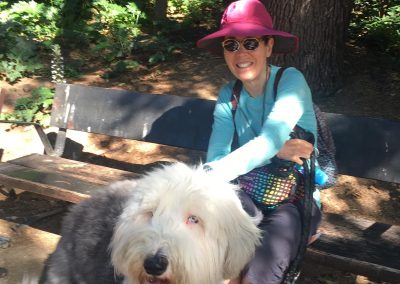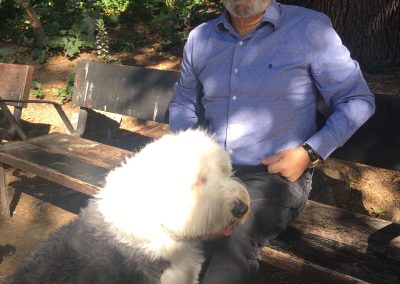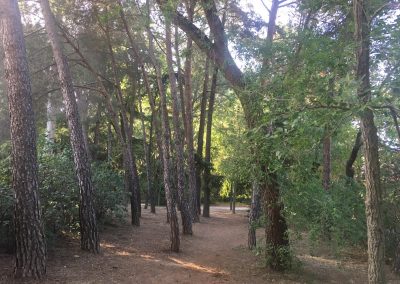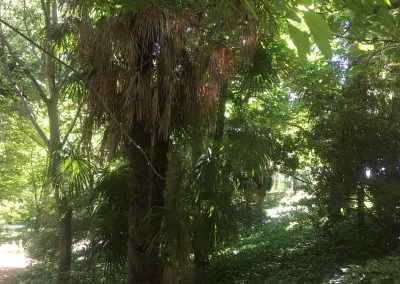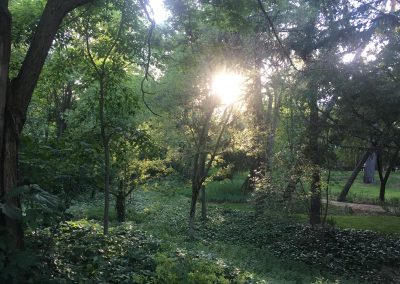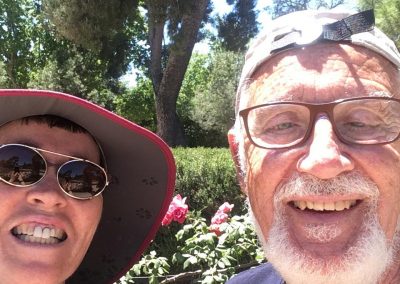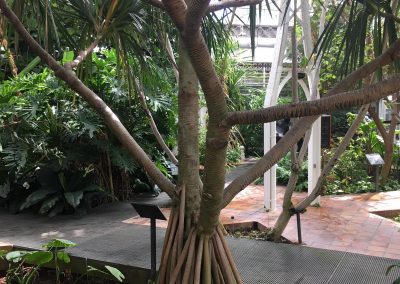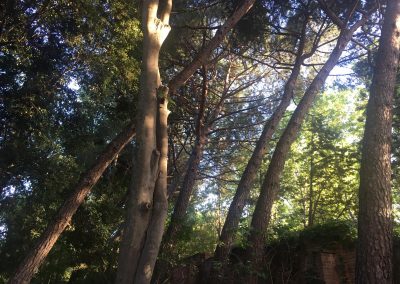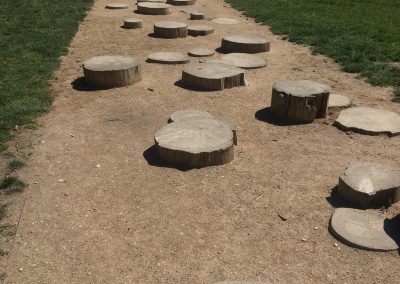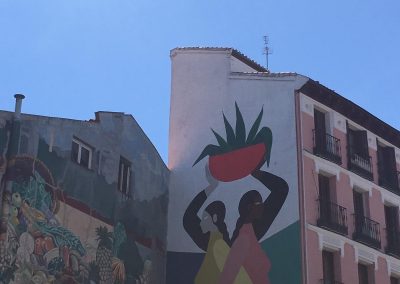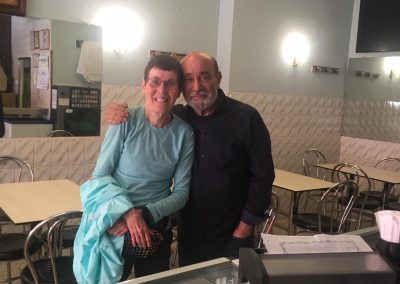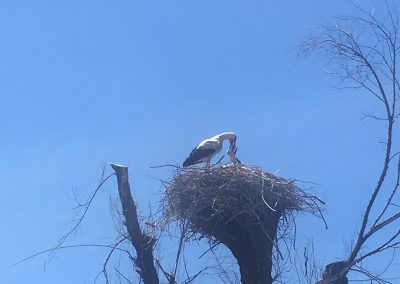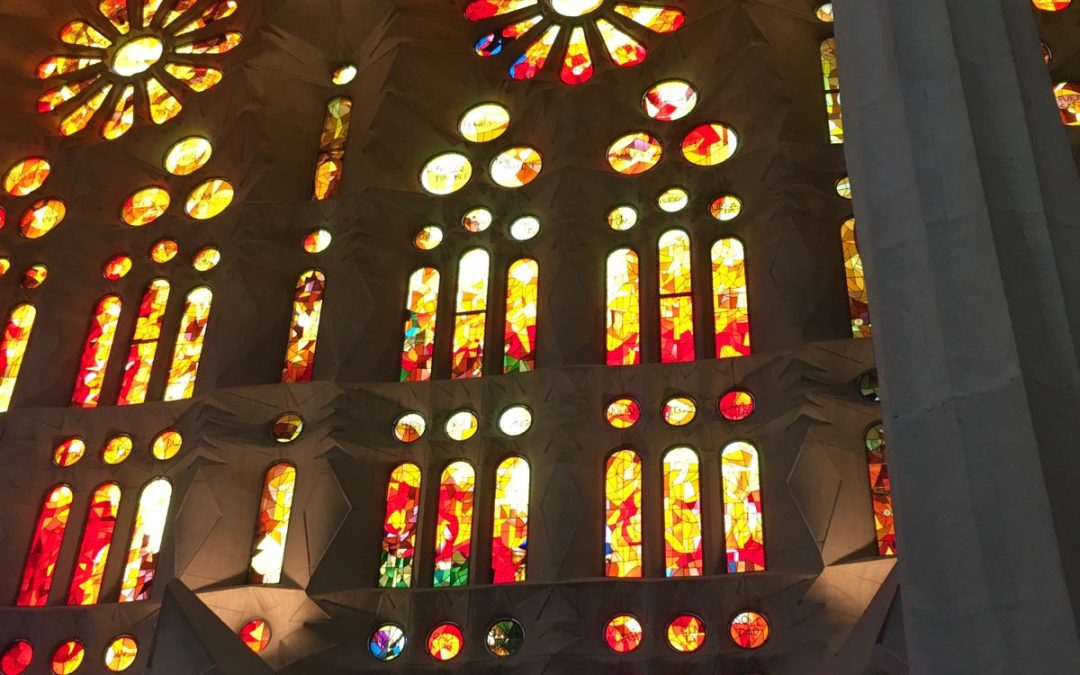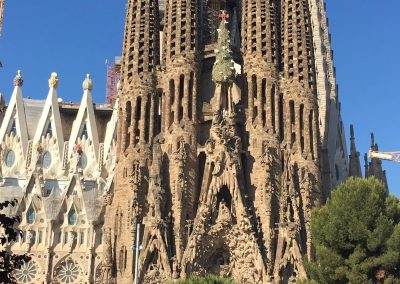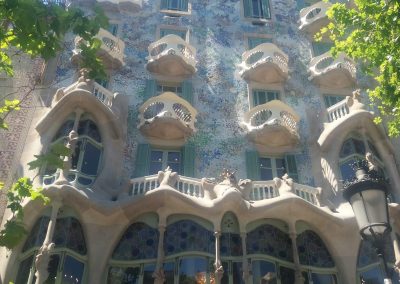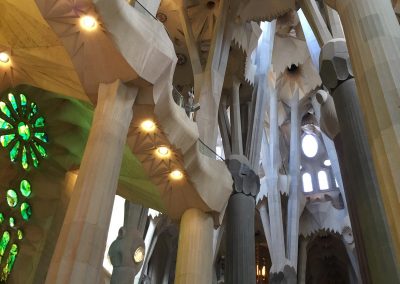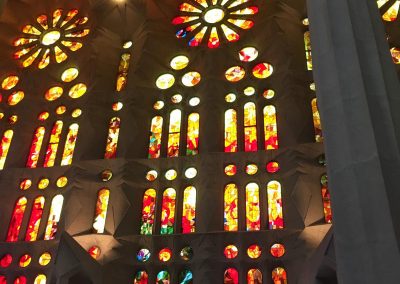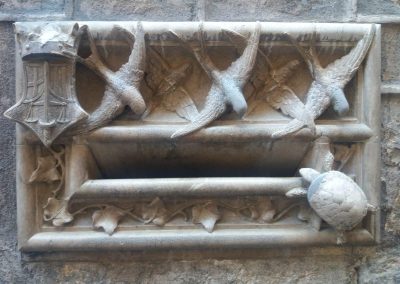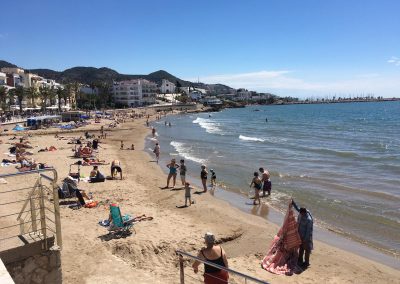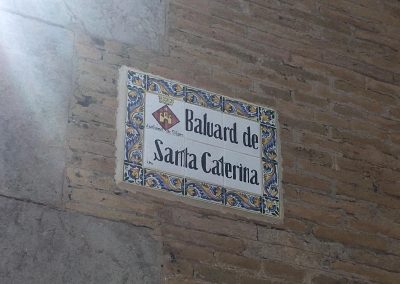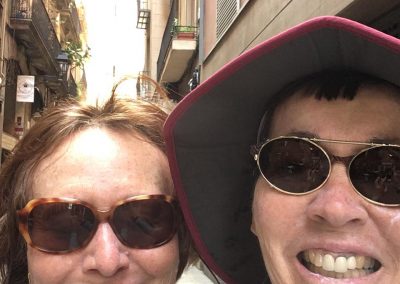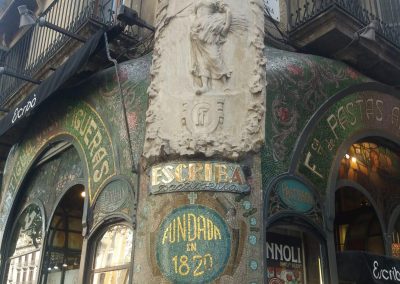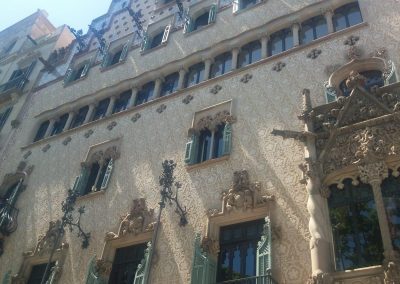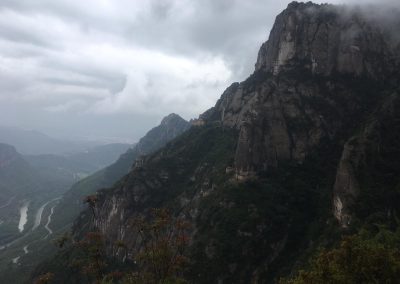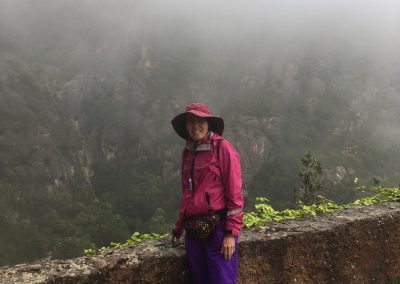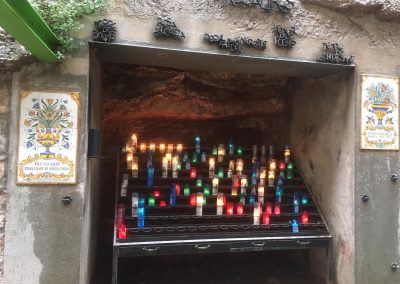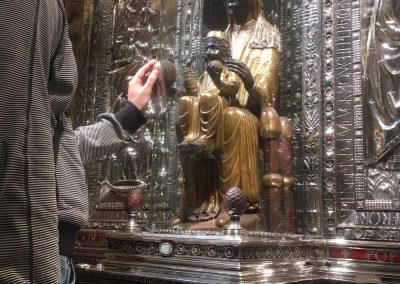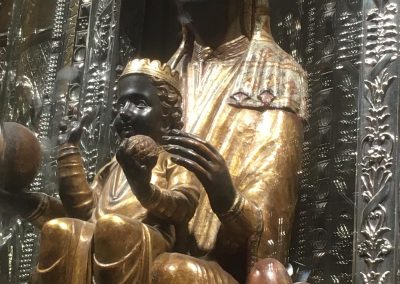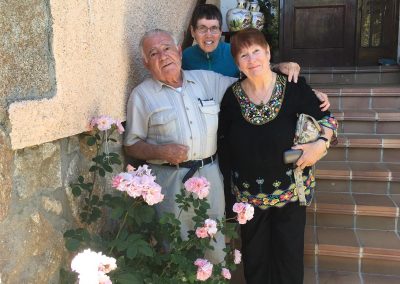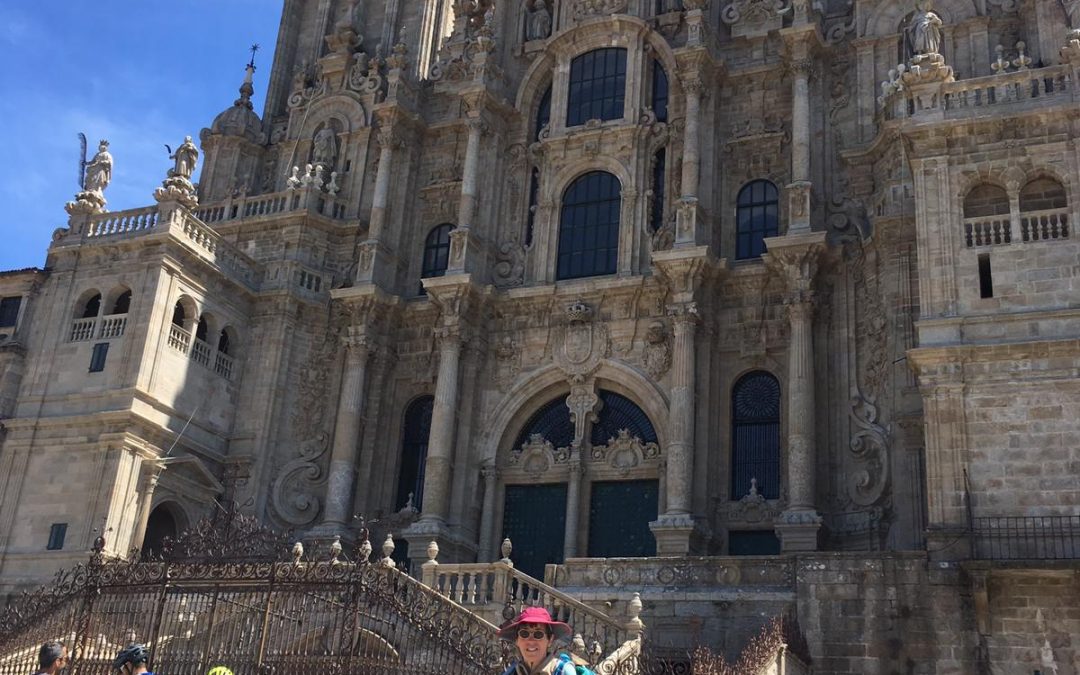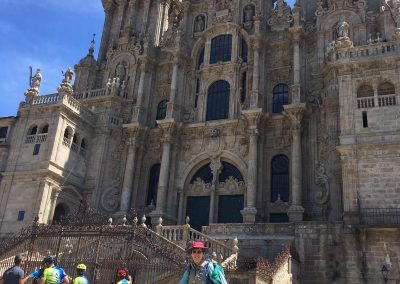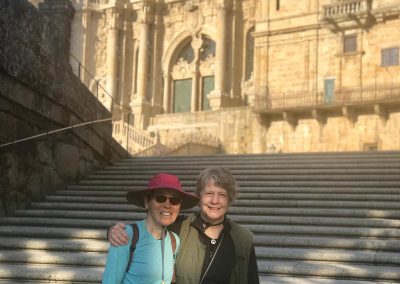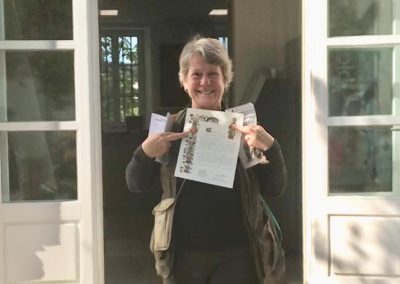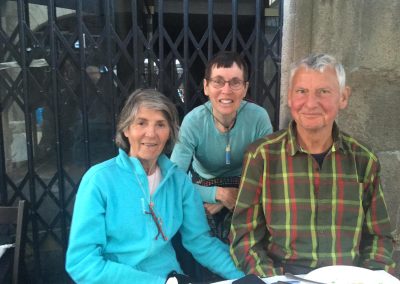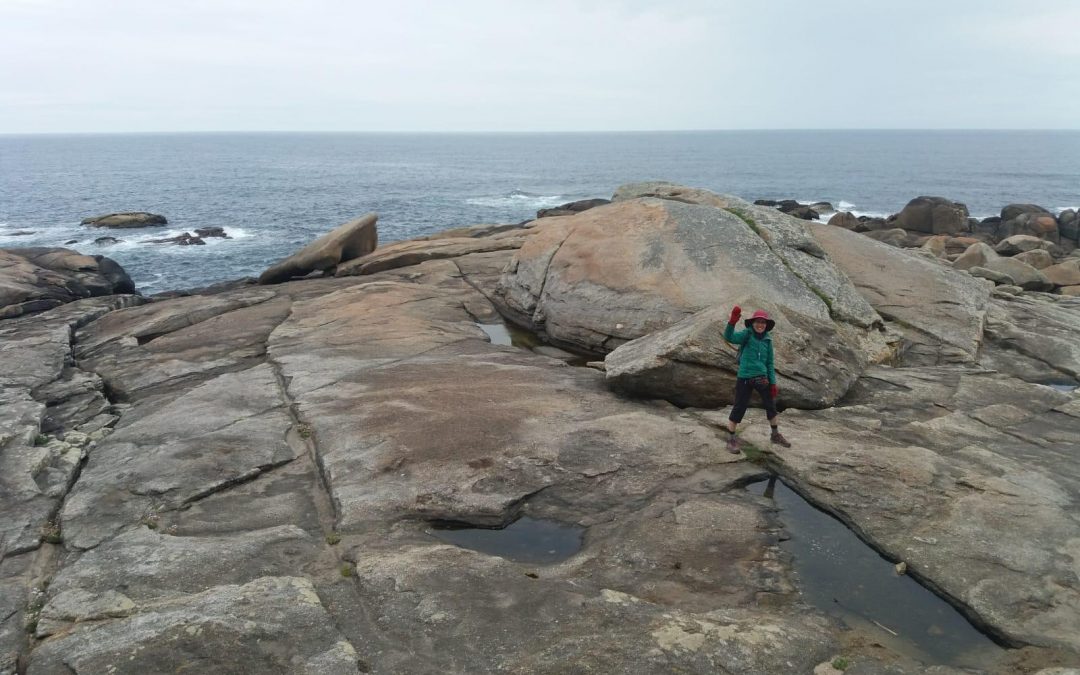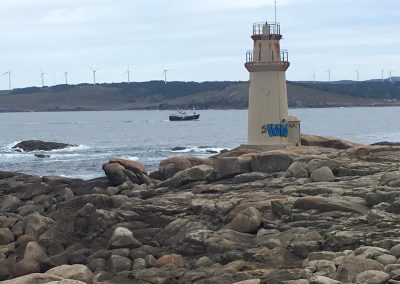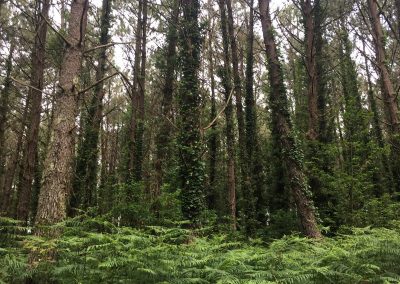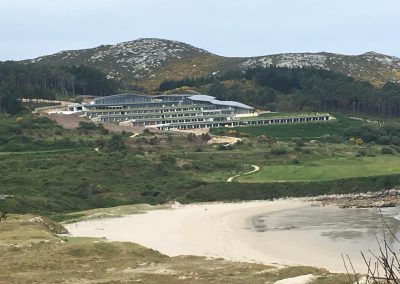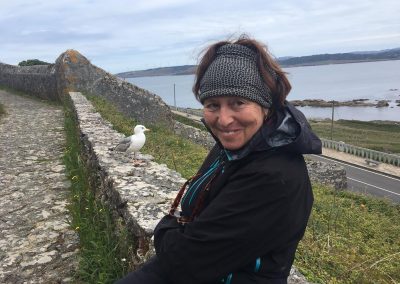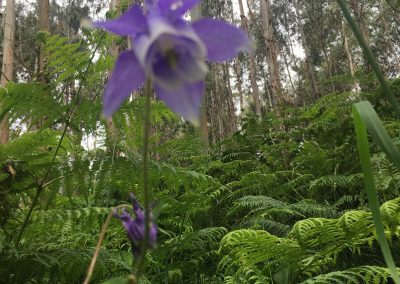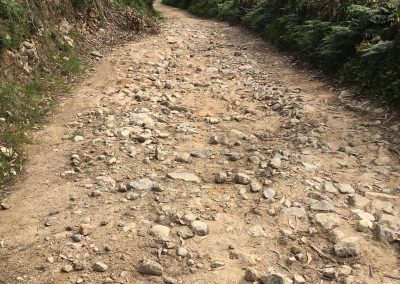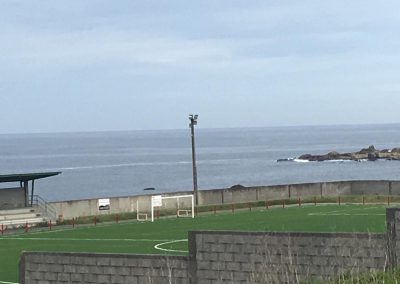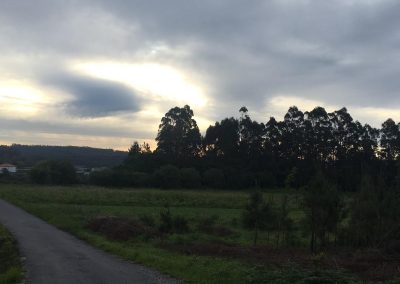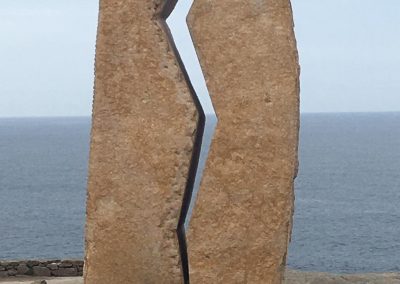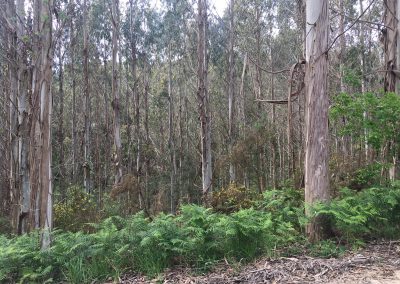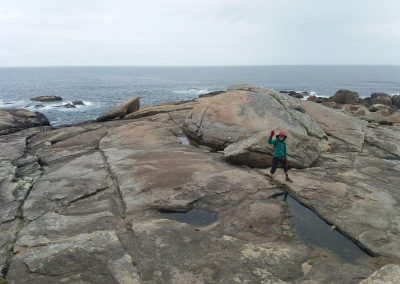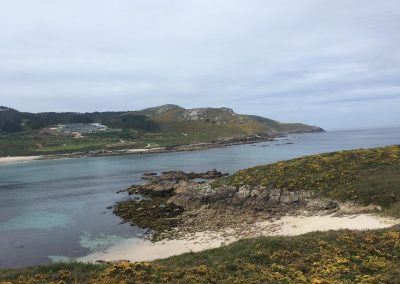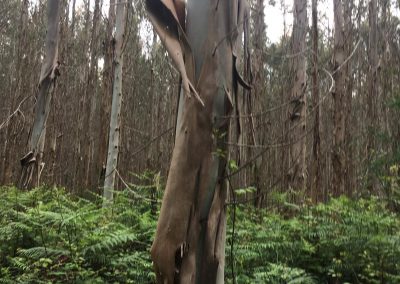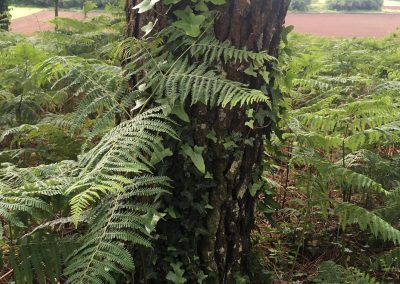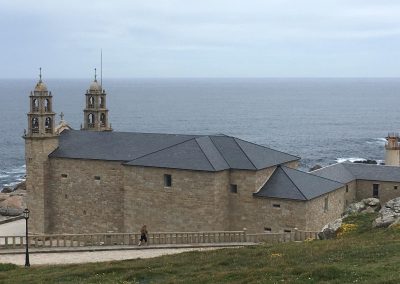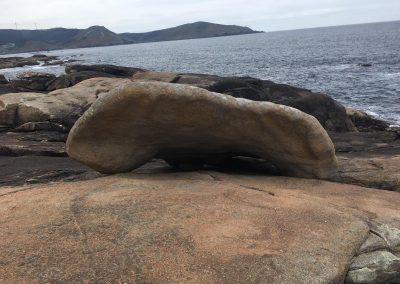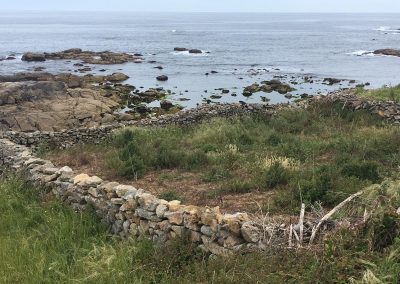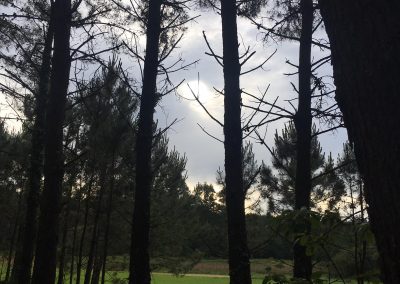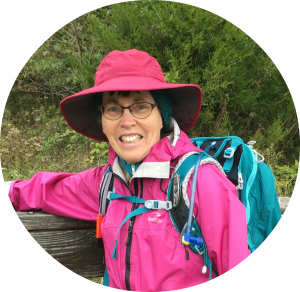May 27-May 31: A pilgrim’s post-camino explorations in Madrid (again, because you prompted, begged, repeatedly requested, and… because I’ll soon forget if I don’t record a few more adventures before I am again stateside)
And by the time this day is over, I will be stateside. I write this post from a café at Barajas Airport where, Iberia Airlines suggested to me yesterday, I would be wise to show up four hours before my flight time. (And, in spite of my protestations to the contrary, I did one better: arriving 4 hours and five minutes before departure time. Then, of course, inexperienced traveler that I am, I waited in a check-in line for about 15 minutes, my pack dragging me down, before realizing that there was no reason to do so since I wasn’t checking any luggage. Maybe I should do more of this traveling stuff so I can continue to perfect the process! I have a long way to go. Annual pilgrimages for the next decade of my life perhaps????)
Anyway, I should have plenty of time to write and send this second-to-last dispatch from Spain. (Yes, there’ll be one more; it’s written and waiting for me to push the “publish” button. Look for it; it’s for and about YOU!)
I have to give Madrid credit for its system of transportation. Spain doesn’t exactly have a reputation for efficiency and hassle-free procedures, but I have to say that Madrid seems to excel at getting people moving from one spot to another via both its metro and its bus systems. They are fabulous! Even to and at the airport. One small example is my experience this very morning. Read on.
So I left my very suitable and extremely reasonable rented room (via Airbnb; more about that later) and walked a block to a bus stop. The bus for route #28 arrived within 5 minutes (just as the changing-by-the-minute screen told me it would) and dropped me off ten minutes later at a stop across the street from where I would be able to get on the Airport Express bus to Barajas Airport. Again, a sign told me how long I would have to wait before that bus would arrive (6 minutes). Once on it, a sign inside the bus gave continual updates on how long it would take us to reach each of the airport’s four terminals. Mine, terminal 4, would take 33 minutes. And then: the countdown was on. Must be a huge airport: between terminal 2 departures and terminal 4 (no stop at #3. Hmmm… Maybe there is no #3? Maybe an unlucky number?) the bus returned to the freeway and made a big loop taking at least 10 minutes. More ride for my 4.5 euros, right? And then, after going through security, I made the discovery that my departure would be from Terminal 4S. OK. Clearly marked with big Ss and arrows, travelers’ movements facilitated by escalators down, down, down. And then, choices: take the 11-minute metro ride or the 20-minute bus ride to Terminal 4S, with the wait times for each clearly displayed. This was actually kind of fun. A puzzle, but not one too taxing for the brain. Even I could figure it out. Oh, and then this: signs clearly displaying how long it would take the average person to arrive to the places he/she needed to be. Airports with which one isn’t familiar can be pretty intimidating, but this one… so far… has been actually kind of fun!
This morning’s experience just gives a sample of Madrid’s system of transportation. Though I did a lot of walking while I was here–would you expect less?–I also made great use of the metro and bus systems, using up each and every one of the 14 rides I’d loaded on a plastic card, plus one extra paid in cash. 5 days, 15 rides. Less than 20 euros. No baggage ever left behind. No “incidents.” No getting off one stop too early or too late. A pretty sweet deal!
Airbnb to the rescue!
I bought my round-trip tickets to Spain back in January. I had some general ideas about what weeks would be best for my plans, but to some extent the departure and return dates were influenced by price. Once I chose a departure date and started counting days, I could just as easily have come home on May 30th or 31st, but the June 1st flight was considerably cheaper, so June 1 it was. I knew, back in January, that, since I was returning to Spain after 47 years, it would be ideal to visit a few friends in both the Barcelona and Madrid areas if I managed to finish the Camino with time to spare.
Two months later I realized that leaving everything up to the last minute would be a mistake, as it would be a lot easier for me to make reservations for travel and lodging from my desktop computer. So… two months after making my to-and-from reservations, and spurred on by Ginny’s hope that we might finish the Camino together, I bit the bullet and decided that I would give the last 10 days to Barcelona/Sitges and Madrid, five days in each spot.
From that decision arose the need to find lodging without breaking the bank. While on the Camino, I expected to be paying somewhere between 5 and 12 euros for a bed each night. Could I come anywhere close to that for my non-Camino days? Dream on! Yet my madrileño friend Jesús warned me that May is an extremely busy month in Madrid and that I shouldn’t put off finding accommodations. More bullet-biting and decision-making. First there was Sitges (Teresa’s hometown, about half an hour south of Barcelona). A resort town. A beach town. A popular town. When I found a room for about $25/night, I didn’t hesitate long. Beautiful it was not, nor did it have a wonderful view. But it turned out to be a safe and convenient-enough spot. Someone fussier than myself would have wanted something cleaner, quieter, less obviously a case of a woman-renting-a-room-because-she-really-needed-the-income. But for me, it was good enough; were I returning to Sitges, I would at least consider staying there again.
I was a lot more concerned about the “room-with-shared-bath” that I rented for my five nights in Madrid. I clicked on “book it” around midnight back in mid-March, not waiting for a response from Jesús as to the suitability of the neighborhood. At 17 euros/night, this one seemed too good to be true. The reviews, however, had all been good. Glowing, in fact, so I booked it. Knowing that climbing four floors to the apartment would be in order (wouldn’t I have recently been “across” the Pyrenees?) Knowing that I’d be sharing the flat with one “José” (wouldn’t I have been sharing bedrooms with male pilgrims for weeks upon weeks?). Knowing that it would take up to 30 minutes to get to the “center of the action” (didn’t I have time as a very available commodity? And since when did I crave being “where the action” is?).
Just to let you know: I lucked out big time! The apartment in which I stayed was super-clean, my host extremely helpful–a pilgrim himself years back–giving me suggestions of near-by places to visit that he felt would match my interests. The air flowed nicely through the apartment, on whose handy balcony I could dry the clothes I washed and write a post or two while overlooking the city bustle below me. José was off to work by 7:20 every morning and gone all day. Handy space in his refrigerator for storing the bits of salad and fruit and yogurt that I bought. A convenient bus stop with useful destinations a block away, and three different metro lines available within 5-to-10 minutes of walking. Romanian, Chinese, and Indian restaurants visible from my balcony. Easy enough access to fruit stands and bakeries and banks. The noise of the city fading outside my open windows by 11:00 pm or by midnight at the latest. Perfect! As perfect as “big city” life can be!
Because that’s the thing: Madrid is a big city. A really big city! And as I keep repeating, I am not a big city girl! Yes, I missed the countryside! The yellow arrows! The way I’d been able to walk down the middle of so-called streets because the little pueblos barely had any traffic. I wasn’t really keen on going to museums, nor did I want to go shopping. So… you are wondering: what did I do? Where was I going when I used up those 14 metro/bus tickets?
Finding the “country” in the city
It’s obvious, isn’t it? I was going to parks! And once in the parks, I was walking! Would you expect anything less of me?
Oh, yes, but what about the people I was going to visit? Well, there was Jesús, for one. Surely I’ve mentioned him before. He was, back during my spent-in-Spain academic year 1968-1969, the boyfriend of my Venezuelan roommate Rosalba. Sweet Rosalba passed away in the early 90s. I had lost track of Jesús, who, I later learned, remarried a few years after Rosalba’s passing. His family has grown from the two daughters he had with Rosalba to include a second wife, a son, a daughter, some five grandchildren, and his beloved dog Lola. (All this I learned from Jesús himself once someone passed on his contact information to me.). Anyway…. Back in early April Jesús met Barb, Ginny, and me at the Atocha train station as we headed north to begin our Camino, and again, this past Monday, he met me at Atocha to bring me, in car, to my Airbnb. I think he wanted to check out its suitability–the 17 euros astounded him as well…–but in the end my landlord wasn’t available until later in the afternoon, so Jesús and I had lunch together, caught up a bit, and discussed when we might meet again and what we might do together. His week had, it has to be said, few openings as even retirement is busy when you are the father of a 19-year-old and a 15-year-old, not to mention being the owner of a big dog who needs a couple of daily walks. Jesús oriented me a bit to the nearby transportation available, we had the waitress snap a photo, and… I was on my own!
We got together two more times, once, at his suggestion, to attend an exhibition on the history of opera, its “passion, pain, and politics.” Jesús belongs to a choir and as we walked through the exposition he was singing some of the familiar opera scores right along with the singers on the screens in front of us. (Me? I was more fascinated with the technology of the exhibit than with the music itself…). And this, ladies and gentlemen, if you must know, was pretty much the extent of what I did to access “culture” in Madrid. Or should I say “Culture with a capital ‘C'”? Because, really, just walking the streets and parks of Madrid is a great way to absorb “culture,” and I did plenty of walking. It took about an hour for the “guided” tour of the opera exhibit. Just about right.
My final encounter with Jesús (since I turned down the opportunity to attend a bull fight as my last activity in the city….; a bullfight? How could I let my Camino trip end with that? Please! I’m way beyond any efforts to defend the “beauty and passion and art” of the corrida de toros. And no apologies)… so, my last encounter with Jesús was yesterday morning, a quick “meet and greet” at a large park between his house and mine, one where he often goes to walk with Lola, whom I had yet to meet. You’ll see from the photos that she has a “large presence” and her very existence attracts a lot of attention.
So there: Jesús. Bittersweet. What we have in common is the beautiful 19-year-old Venezuelan law student with whom I shared a room as well as travels all around Madrid, in several parts of Spain, and in Italy during Christmas of 1968, someone whose life was cut all too short from cancer and to whom I never had a chance to say good-bye. She never shared her illness and I only found out about it after her passing. It was good to see that Jesús had rebounded from his loss and that he has lead a life of personal fulfillment and cultural engagement.
So that park where Jesús and I met up? It was called the Quinta de la Fuente del Berro. I had found it, following my Airbnb host’s instructions, on my first full day in Madrid and no sooner did I enter it than a smile spread across my face. Ah! Trees! Tall ones! Vegetation! I’d be willing to bet that I was the only non-native in this large city park. It was, actually, the only time while in Madrid that I felt the need to take notes. I’m not even going to consult them now, but what moved me was watching people: feeding the ducklings, doing photo shoots, walking dogs, strolling, running, riding bikes, playing cards, pushing strollers, studying–alone and in groups–, walking around obviously memorizing notes for an upcoming exam or presentation, enjoying the cover of the trees, a man flying a remote-controlled airplane… but plenty of space for all these activities. Far from crowded. I could still hear the traffic from the nearby M-30, but I had indeed found a refuge from the “big city.”
And it was, actually, the second one I had found, for on my first evening in Madrid, again at my host’s suggestion, I had walked in a different direction and within 25 minutes from “home” I had entered another “Quinta,” that of “los molinos” (the mills). If I lived in Madrid, it would be, I suspect, a frequent refuge (though I don’t recall ever being there before during the two years I spent, oh so long ago, in Madrid). Shade, tall trees, a bit of unkempt “prairie.” Dog-walkers, people “with a purpose,” others just strolling. Another good find to give me my peaceful walking fix.
And there was yet another chance to “get away from it all”… or, if not “it all,” from a good bit of it. That was on Thursday when, per prior arrangement, I met up with Baudilio, an engaging and happy 79-year-old who I had met on the last leg of my Camino (you may or may not remember a video of him giving me a “good morning” greeting). Baudilio appears to be an active fellow and is proud of the five marathons he has run. The last one, however, was when he was 62, after which he switched to walking; he gets out hiking several times/week with an active club in Madrid. Baudilio “took up” the Camino around 2002 and, excepting the five or six years during which he cared for his wife whose treatments for cancer led to weakened bones, repeated breaks and falls, etc. She passed a couple of years ago and Baudilio again does two or sometimes three “segments” of one or more of the various Caminos every year.
In an attempt to come up with a plan that a fellow pilgrim might enjoy, Baudilio planned a couple of things. We first went to Madrid’s former Matadero (stock yards) where structures that once held animals prior to their slaughter now house exhibitions and events. Several of the former stock buildings have been converted into greenhouses dedicated to tropical and semi-tropical plants and trees. We toured those houses before setting out on what we might call a “riverwalk” but which is known as “Madrid Río.” Some years ago, apparently with many objections from a less-than-visionary public, a mayor of Madrid came up with the plan of diverting a major freeway–the M-30–hundreds of feet underground in order to convert its above-ground acreage into an extensive riverwalk. (Apparently the wifi on the plane–yes, I’m now airborne–is not going to let me do any research on just how extensive it is. Upon seeing it, however, I’ll tell you this much: I couldn’t help but think that biking along it, especially as it went away from the city, would be a lot of fun… at least in cloudy and cooler weather than Baudilio and I were experiencing….). We walked a bit on each side of the river, and I was impressed by the landscaping and the variety of opportunities along its length for all sorts of play and recreation. I have to add that, unfortunately, the river itself–the Manzanares–is about as pitiful a river as one would care to see. Apparently it doesn’t usually have much more water than what I saw, and what water is there is very muddy. The river needed all the help it could get with the landscaping along it, because otherwise…. there’s not much to recommend it. A pity. Strange, too, that such a major city grew along such a puny river. Maybe the Manzanares had more to offer back in the day. Or maybe that was just the best the meseta of Spain had to offer….
Baudilio’s early morning plan of the matadero and the riverwalk was to give the day a chance to warm up before we went to the Retiro Park where the plan was to rent a rowboat in the giant “pond” located therein.
Maybe you’ve heard of the Retiro? Indeed, it was the one place in Madrid to which I for sure wanted to return. When I lived in Madrid in ’68-’69, my boarding house was just a block or two from one of the entrances to the park. I was surely walking in the Retiro, if only to “cut through,” on a near-daily basis. Not that I’ve been to Central Park in New York, but I’d still stick out my neck and say “kind of like Central Park.” Very everything: vibrant, tree-filled, monument-filled, people-filled. Paths that criss-cross in every direction, gardens of all types, people galore: walking, strolling, running, biking–now, anyway, in 2019, though not when I first knew it–, kissing, sunbathing. Street musicians busking, beggars with their cardboard signs, foreigners from all over the world. It is a bustling place.
My visit to the Retiro with Baudilio was not my first on this trip. I had passed through it during my long walk Tuesday afternoon, and again on Wednesday. So, three out of five days. I can’t claim that I was “in the countryside” while there, but it was a way to “escape” the street scene, do some people watching, and remember days long gone.
Had I ever rowed in the Retiro’s “estanque” before? Probably. Not that I can remember for sure, but probably. What surprised this time was this: I said to Baudilio: “Let’s go halves on this” and he laughed. “Wait ’til you see how cheap it is!” Indeed: 45 minutes of rowing for two at a senior price of 1.8 euros at the time of day we were going! No, no need to share. What he did let me do, once we were away from the dock, was take over the oars. I think he was surprised that I was as skilled as I was. Lots of practice from the summer cabin of my childhood.
Thursday ended with a Spanish-hour lunch–and yes! I was very hungry by 3:15!)–that would make any cardiologist throw up his arms in despair–torrejones (picture deep-fried large slabs of something like bacon) and fried chicken wings! Had to have been one of the worst (health-wise) meals I had in Spain and… perhaps one of the tastiest, though both meats could have used a dipping sauce. No dinner needed that night….
It was fun to meet up with a fellow pilgrim, post-Camino. We had only walked together for an hour or so one week earlier and had dinner together with fellow pilgrims one night, but there was a connection that then served to make a half-day in Madrid more comfortable. I wish I had connected in the same way with a few female pilgrims from Madrid, but as I think I mentioned earlier, the women mostly traveled in groups and thus didn’t have the need to go outside of themselves to meet up with other pilgrims. (For that very reason, my friend Cristina from Barcelona turns friends away when they suggest doing a Camino together; she has always gone alone, and with mostly good results.)
The only other “escape” from the thick of it all within the city proper was on Tuesday afternoon when, towards the end of a long walk, I thought I’d just have a look-see at the royal botanical gardens next to the Prado. I hadn’t decided if I would pay to tour them or not, but just thought I’d at least walk by and decide on the spot. The decision was pretty much made for me when I got to the gate to read the entry prices and learned that on Tuesday afternoons at the time I had arrived, the entry was gratis (free). So why not?
My feet were dragging. I would end up logging just shy of 22 kilometers on foot that day. When I entered the gardens, I was in a bit of a stupor. Plus, I’m beyond hopeless with plant names. I wandered up and down and around, knowing that I had seen gardens infinitely more attractive than these in any number of places. Perhaps the best thing I found, quite hidden away, were the aseos (bathrooms). First things first!
And those “almost 22 kilometers”?
Well, I couldn’t return home without reconnecting myself with certain key spots in the city, could I? What would you all say? Tempting as it would have been on Tuesday morning to bring a book or even this keyboard to one of the quieter parks I had come upon, I gathered up my courage and what energy I could muster and set off for “where the action is” (aka “where the tourists are”).
No, let’s get it straight from the beginning: I did not enter the Prado or the Reina Sofía or the Palacio Real. I did not visit the Museum of Modern Art or the cathedral, not the Liceo or the Cuevas. Tempting as it was, I did not participate in either Tour #1 or Tour #2 offered by the hop-on/ hop-off City Tours operation. Maybe this all shocks or disappoints you. Maybe, in my shoes, you would have done the same. I just did not feel like being in “tourist mode.”
But even I won’t deny that Madrid is a beautiful city with so many of the structures that define old European cities. Seen against the backdrop of a cloudless blue sky–and that was the case on each of my five days there–, beautiful buildings and fountains bathed in the sun, so many buildings recently “touched up,” it was a sight to see. So much so that half the world, it seems, was out to see it. Ah, yes, the streets were crowded and animated, and, if Jesús is to be believed, there was probably nary a madrileño in their midst, the latter trying to avoid the tourists and their trappings. But impressive, nonetheless. Some of you will picture in your minds as I mention my route once I got off the bus in the Puerta de Alcalá: Alcalá street itself, down to the Puerta del Sol, then on to the Plaza Mayor and a stroll up and down some of the narrow, colorful streets leading out from it, an over-priced meal just off the Plaza Mayor, then on down to the Cathedral, the Palacio Real, and the gardens adjacent to it, then to the Plaza de España where I searched in vain for the statue of Cervantes in the midst of the renovations of said plaza (if he’s there, the work-in-progress walls keep him well-hidden; darn!). And then, gasp, onward: the full length of the Gran Via, then a left, back to Cibeles, down to the Prado and the Botanical Gardens–where, as mentioned, I did, finally, stop and “visit” something. Through a couple areas in Retiro Park, and back to the bus stop, and, finally. a well-deserved evening “at home.”
All my evenings, in fact–remember, in Spain, “evenings” begin sometime around 9:30 or so, just before the traditional 10:00 pm dinner time–all were spent “at home.” My goal, reached night after night–or afternoon after afternoon!–was to be safely in place at dusk. Hard to “get lost in the dark” if you’re already in place before the dark arrives. I had no illusions about catching a flamenco show, a theater performance, or a concert. The daylight hours were more than enough for what I wanted to do.
An excursion
Wednesday was my designated “really-leave-the-city-behind day,” a day chosen by Sara Saz as the most convenient one on which I might visit with her and her husband at their home in the town of El Escorial where they “retired”–and where they find themselves plenty busy!–a decade or so ago.
And they are? Sara was my colleague–“boss,” really–for five years back in the early 90s when she was Director of Language Instruction. Prior to IU, she’d been at Clemson University and after IU at the Colorado State University in Fort Collins. From England, Sara met Carlos during her student days in Madrid, and… well, when I saw them they had just returned from a cruise to celebrate 50 years of marriage and of mutual support and dedication.
Sara did the math and figured out that it had been 22 years since we’d seen each other, though there had been letters and emails and even a phone call exchanged in the interim. It was my luck that she and Carlos were home, as being there, it appears, is closer to being the exception than the rule. With children and grandchildren in Milan, Hong Kong, and Chicago, plus family in England, a “retreat” home on the Mediterranean, and get-always like their recent anniversary cruise, they remain active. Add to the travel the continued participation in scholarly research. My hats off! And with all that, Sara hasn’t forgotten how to cook, our meal on Wednesday being absolute proof of that! It was a delightful afternoon “up in the sierras,” reached easily enough by train.
So easy, in fact, that I gave some thought to hopping on a similar train on Friday, my last full day in Madrid. Maybe Cervantes’ birthplace in Alcalá de Henares? Maybe Aranjuez? Pretty flowers there…. In the end, though, I opted to stay put. Here’s how.
This is it!
So, how to spend that last day? In the end, it was the zoo/aquarium experience that won out. Frankly, folks, I was looking for the easiest way to use up a day short of just sitting around doing nothing. It was too early to go to the airport! I had turned down a bull fight. I didn’t have the energy for art galleries. I’d fall asleep if I set about reading a book. Yep, all signs that I was ready to return home. But still, my flight was not until Saturday. So… let’s go to the zoo! See as much or as little as one wants. Learn as much or as little as one wants. Many choices!
And that’s what I did after my quick encuentro and despedida (“meet and greet and take leave”) with Jesús and his huge, beloved, blue-eyed beauty, Lola. The morning held one bus ride, two different metros, and one 10-minute walk before I was in line for my ticket. (And thanks to the person who was distributing her spare 40%-off coupons! My day’s entertainment cost a bit under 15 euros; my water and lunch were in my daypack.)
It soon was apparent that it was a good thing I hadn’t chosen anything more demanding for the day. Imagine nodding off during the dolphin show! That was me! Yes, really tired! Waking up too frequently at night? Exhausted from a sore-throat-trying-its-hardest-to-turn-into-a-cold-for-more-than-a-week? Too much bread? Or wine? (Actually, I didn’t have any wine in Madrid…. and I doubt the few beers I’d had would count.). Or… the heat? Or just maybe: two months of travel? Ya think?
I took it slow and easy. Drank lots of water. Tried to cover the different areas. Saw how smart the animals were on this hot afternoon, making the most of any shade and any siesta time they could. So… in general… a sleepy, quiet bunch.
Not the well-rewarded dolphins, of course. They are always crowd pleasers. As beloved as the pandas and the koala bears are, they were not in entertaining mode. I give the following awards:
- the least attractive and perhaps most interesting to watch in their various interactions with one another: the baboons, hands down
- Adorable when in motion (which wasn’t often enough to suit me): those cute little Australian marsupials that aren’t kangaroos… (needing Google here, folks…)
- Best cooperative posers: the North American brown bears
- Funniest looking: the small white hens with the huge collar of feathers around their necks, looking for all the world like the animal version of a 17th-century nobleman
- Loudest: very possible the peacocks (and they were everywhere)
- Most colorful and varied: the fish in the aquarium. They also looked the most comfortable, keeping plenty cool in spite of the heat, and unaware of the loud din and racket being created by all the zoo visitors who were inside the close and echo-filled enclosure of the aquarium to get away from the sun
- Most patient and admirable: the teachers there at the zoo with their pre-school, kindergarten, and first grade classes (“patient” because otherwise they might be arrested for wringing the necks of their charges; “admirable” because they probably have taken kids to the zoo previous years and yet they choose to do it again and again…)
- Most tired: me? Some of the parents? Some of the little ones who hadn’t had a nap, weren’t allowed to play in the drinking fountains, or were frustrated because they looked right where dad said but they still couldn’t make out the shape or the movement of the little koala
I took few photos at the zoos. In the end, turns out I like trees more than animals…. But: I filled in that last day.
With money to spare. No room in my backpack to bring anything more home with me, so at least a dinner out was in order. I was hoping to find my landlord and his 7-year-old son at “home.” There was a sign across the street for pizza (a popular American company, but it also escapes my mind at the moment). If I’ve had pizza in the last two months, I’m not remembering it….. it might be fun to treat the guys. Well, it was clear that big José and little José had been at the house, but they had gone out again. So off I went to the Indian restaurant across the street, where I chose an outdoor table and was the first one to show up for the evening, it being only about 8:00 pm.
Never comfortable eating out alone, I got “busy” on my phone sending a few messages. Someone sat down at the table next to me and, because it was awkward not saying anything, I made small talk about being glad the building across the street was soon going to be blocking the direct rays of the sun. That innocuous beginning somehow gave the gent the idea that he could use me as a sort of bartender with whom to share his sorrows…. I’m thinking that maybe the beer he was drinking was not his first…. It was really rather awkward. It is one thing to be friendly to a stranger sitting next to you on the Camino; it is, apparently, altogether another to be so on the sidewalks of Madrid. I was glad when Fernando–yes, we got on a first name basis after he moved over to my table when his first beer was gone and his pot of tea arrived…–decided to go inside the restaurant for another beer and no, I made it clear, I was not interested. Count me as one who is happy that no more eat-alone-in-the-big–city meals await me. Not for a good while.
Because…. I’m on my way home to my “little city” where my folk await me! And where they’ll welcome me, even if it means they have to stay up past midnight to pick me up. They needn’t fear I’ll keep them up all night with chat, idle or otherwise. I need my sleep as I’ve got one amazing trip from which to “recuperate” … and bottle-washing skills to reincorporate into my schedule. With joy, right? Always with joy and thanksgiving, right?


